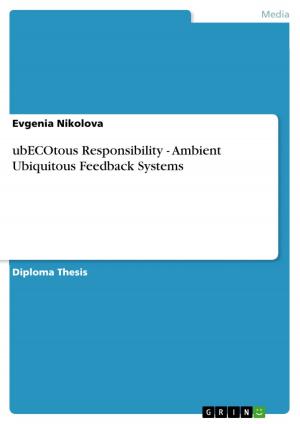Focus strategies in english sentences and their representation in books for school age german learners of english
Nonfiction, Entertainment, Drama, Anthologies| Author: | Anja Dinter | ISBN: | 9783638796255 |
| Publisher: | GRIN Publishing | Publication: | June 8, 2007 |
| Imprint: | GRIN Publishing | Language: | English |
| Author: | Anja Dinter |
| ISBN: | 9783638796255 |
| Publisher: | GRIN Publishing |
| Publication: | June 8, 2007 |
| Imprint: | GRIN Publishing |
| Language: | English |
Seminar paper from the year 2002 in the subject American Studies - Linguistics, grade: 1,3, University of Potsdam (Institut für Anglistik und Amerikanistik), course: The Structures of English , 23 entries in the bibliography, language: English, abstract: The aim of the following work is mainly to present focus strategies in English sentences. The topic has been of great interest to me since such focus constructions are an important grammatical means of re-arranging the information within a sentence according to one's intention. Being familiar with a wide variety of focus strategies is one possibility of improving one's style, both in written and spoken English. Several university level grammar books provide a great number of different means to assign focus within a sentence. In the following course of this paper I'm first going to explain and discuss the term focus as well as its function in English grammar and then show the possible ways of organizing a message. Due to the above mentioned variety of focus strategies not all of them can be itemized here. I decided on presenting those focus constructions which, in my opinion, seem most relevant for the purposes of a foreign language student. The prescribed extent of this work makes a detailed description of each construction, as it can be found in scholarly grammar book, impossible. Therefore, only the most important attributes and particularities of each strategy are named. In most cases examples are added for visualization and a better understanding. In their publications linguists present different ways of classifying focus strategies which makes a clear division of the constructions relatively difficult. Furthermore different notions of which grammatical structure can be considered a focus strategy are existing. Under the respective headline these problems will be discussed in greater detail. Dealing with these focus strategies and the purpose they serve raised the question if these constructions can be found in school-books for German learner's of English as well. As a future English teacher I'm especially interested in that and therefore decided to examine several books available. The results of this examination, reasons for a necessary integration of focus strategies into a classroom context and suitable literature are mentioned in the final part of this work. Since focus strategies aren't (yet) generally represented in school books this part is rather short in comparison to the one dealing with the focus constructions itself.
Seminar paper from the year 2002 in the subject American Studies - Linguistics, grade: 1,3, University of Potsdam (Institut für Anglistik und Amerikanistik), course: The Structures of English , 23 entries in the bibliography, language: English, abstract: The aim of the following work is mainly to present focus strategies in English sentences. The topic has been of great interest to me since such focus constructions are an important grammatical means of re-arranging the information within a sentence according to one's intention. Being familiar with a wide variety of focus strategies is one possibility of improving one's style, both in written and spoken English. Several university level grammar books provide a great number of different means to assign focus within a sentence. In the following course of this paper I'm first going to explain and discuss the term focus as well as its function in English grammar and then show the possible ways of organizing a message. Due to the above mentioned variety of focus strategies not all of them can be itemized here. I decided on presenting those focus constructions which, in my opinion, seem most relevant for the purposes of a foreign language student. The prescribed extent of this work makes a detailed description of each construction, as it can be found in scholarly grammar book, impossible. Therefore, only the most important attributes and particularities of each strategy are named. In most cases examples are added for visualization and a better understanding. In their publications linguists present different ways of classifying focus strategies which makes a clear division of the constructions relatively difficult. Furthermore different notions of which grammatical structure can be considered a focus strategy are existing. Under the respective headline these problems will be discussed in greater detail. Dealing with these focus strategies and the purpose they serve raised the question if these constructions can be found in school-books for German learner's of English as well. As a future English teacher I'm especially interested in that and therefore decided to examine several books available. The results of this examination, reasons for a necessary integration of focus strategies into a classroom context and suitable literature are mentioned in the final part of this work. Since focus strategies aren't (yet) generally represented in school books this part is rather short in comparison to the one dealing with the focus constructions itself.















